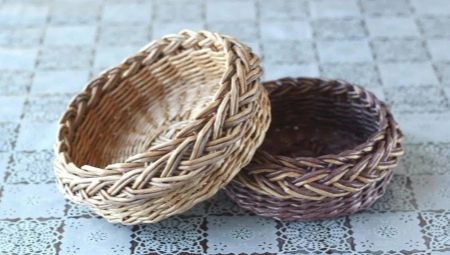Weaving from tubes is not such a newfangled type of needlework. It has existed for a long time, but from time to time "experiences" a new wave of popularity. Since plastic from modern interiors is as much as possible crowded out, but wood, natural textiles, straw and knitted decorative products, cork, on the contrary, have strengthened their position, weaving will be very appropriate. And you can weave from newspaper tubes - affordable and cheap material.
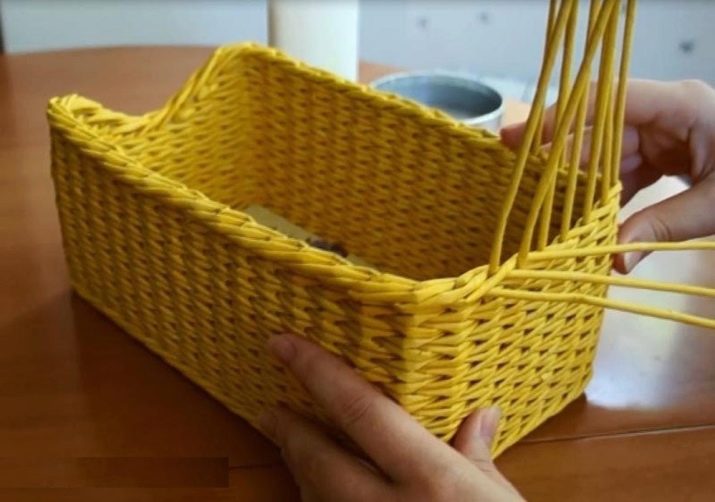
Types of weaving
There are several options for weaving, each is interesting in its own way and makes it possible to obtain an intricate pattern in a simple way. Some techniques can be compared with lace - usually this is done by openwork boxes. There is weaving that provides strength and density to the craft, that is, they will not have gaps at all.
Ways of weaving newspaper tubes:
- one strip;
- a rope of three tubes;
- weaving of direct and return rope with stripes-tubes;
- interweaving with one or two blanks;
- spiral weaving;
- bend "braid".
It is recommended to start with simple weaving. This means that you will have to assemble the frame, tie it up with one or more vines.
A wonderful technique, if there is a goal to practice in the formation of the skeleton and the management of the ducts in bends / turns.
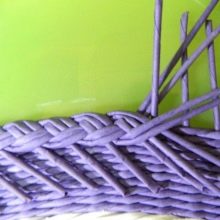
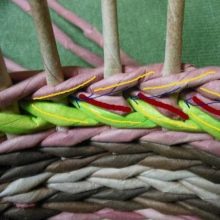
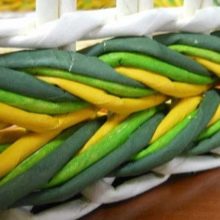
There are some basic tips for beginners.
- The gap between the posts is no more than 2 cm. If this rule is violated, the weaving will be loose and fragile.
- Racks should be treated as delicately as possible: do not crush or bend short elements during operation.
- To avoid holes and serious holes in the pattern of the woven product, after each row is completed, the racks need to be aligned, pressing the wicker rows to each other as tightly as possible.
- It is recommended to hide the places where the elements are fused in the weaving, between the posts in the middle.
- If the tubes are no longer flexible, they are too tight, they can be sprinkled with water, kept for 20 minutes in a plastic bag. So the paper material becomes obedient and will not leave creases. At the same time, the paper vine will subsequently become strong.
- During weaving, moistened tubules can become shaggy, therefore, if moisture was excessive, you need to let the material dry a little.
- The ends of the bent racks are best trimmed inside the product. By the end of weaving, it is better to cut off the old racks, while inserting new moistened racks, which will fall well without creases.
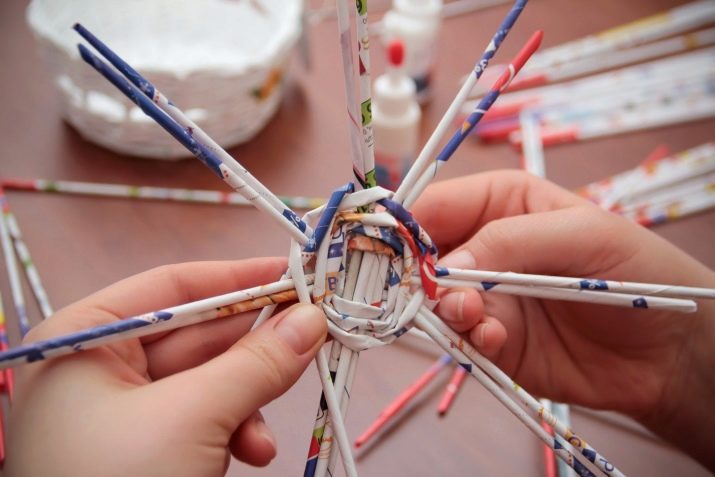
If you look at the works in this technique (for example, the famous Czech weaving), it becomes clear where the masters have so much enthusiasm. Beautiful voluminous works adorn the clock, presented in the form of panels, vases, various decorative containers.
And even Christmas tree decorations made using various interesting techniques (for example, Isis bends) are very original, authentic.
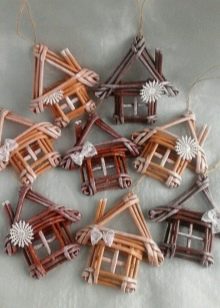
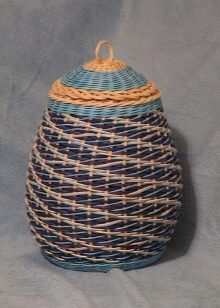
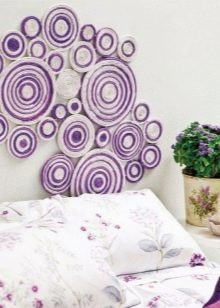
How to make?
Any master class includes step-by-step instructions that explain in detail the creation of a particular decor. But for those who have never picked up newspaper tubes, preliminary universal instruction will be more valuable.
- Step 1. Material selection. If the task is to make a large box or stand, glossy magazine pages are suitable as material. And if the interior decoration is small, thin tubes are used: they are more plastic, bend easier, do not break round shapes.
- Step 2 A standard universal set of materials and tools: newspapers, cut into strips of 4-10 cm, a skewer or knitting needle with a tip, scissors (a clerical knife will also work), PVA glue / glue-stick / "Titan".
- Step 3 Preparation of material for weaving. The newspaper must be cut into 4 strips on the short side, then sorted, that is, edge strips (of which white tubes come out) will go to one pile, text prints to the other. The cut should be laid in front of you on the table (with a white border down).
- Step 4 Beginning of work. In the lower right corner of the cut, the needle is laid at the desired angle. The smaller the distance between the newspaper edge and the knitting needle / skewer, the longer the tube will be. The corner must be wrapped with tension, on the spoke - one revolution. It needs to be held, spiraling the entire cut. Winding is necessarily supported by tension along the entire length. Glue for fixing is required to be applied to the finishing corner.
- Step 5 Get the knitting needle. The needle is most delicately taken out, after which the finished tube is sent to dry. It takes an average of 20 minutes. The diameters of the ends of the tubes will be different, because they can then be increased. An adhesive composition needs to be applied to the thin edge, and it will be inserted or screwed into the wide edge. That's all - in a quick way they got rid of the joints.
- Step 6 Coloristic decision. When the entire product is woven according to the requirements of a particular MK, the work needs to be painted. Sometimes this is done before weaving, if the product is multi-colored. Hue, saturation of the tone is always a personal experiment of the master. What you can paint: with watercolors, gouache, acrylic paints, stains, water-based paints.
- Step 7 Varnishing. After the paint has dried on bound tubes, varnish should be applied to the product in 2 layers. So the color of the finished work will become brighter, more saturated. In addition, such a product will not be afraid of moisture.
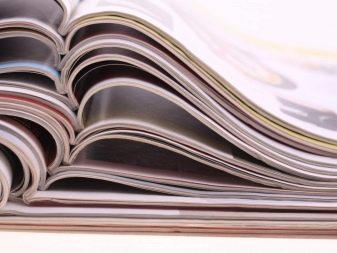
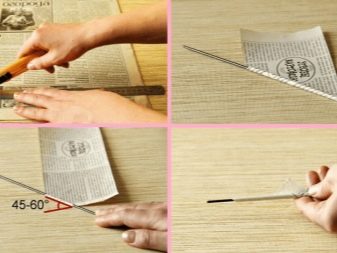
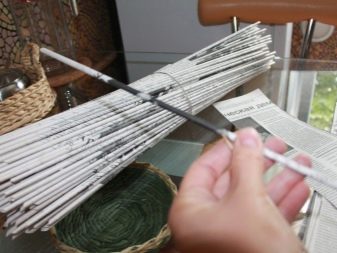
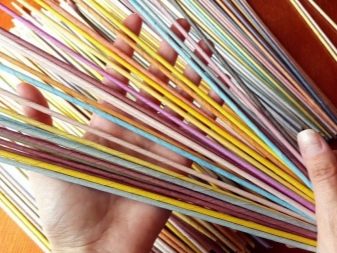
"Scythe"
- This simple bend will consist of three rows. For beginners - the most optimal way to learn weaving.
- The beginning of weaving of the first row - in a pigtail of three tubes (in this case - previously stained), you need to weave the risers. The working tube must be placed behind the riser, and the previous one is laid on top of it. The same is done until the end of the row.In order for the last riser to be stacked, the next duct starts up under the stacked ones, and after it the riser. The first row is ready.
- The second row - each tube must be brought inside under the next two. Then you need to skip it to the left of the second tube. And so do until the end of the row. The penultimate tube should be brought under the first, and the last - under the second.
- The third row - each tube must be wound over the next and brought out, that is, inside the product you get a nice pigtail. Ponytails that form outside must be trimmed carefully.
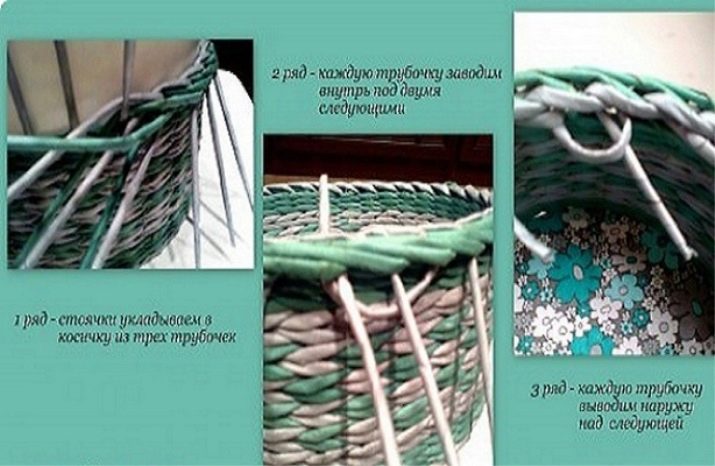
That's all, very simple, if you look, you can make a beautiful product - such a basic blank for anything. It can be just a basket without a top or the basis for a future casket. By the way, in this MK weaving goes from right to left, not all masters do this. If it is more convenient to weave in the opposite direction, it is worth considering that the bend will go the other way.
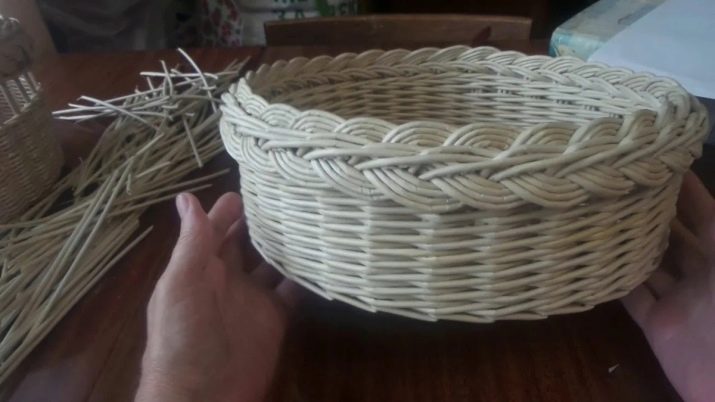
Basket vase
- For work you need to take: paper, parchment, knitting needles, PVA glue, scissors.
- Cut the paper into strips, divide the entire roll into pieces of 50-60 cm, and then each piece into another 3 parts. When the strips are ready, they can be twisted using a spoke. To fix the beginning of the tube well, you need to apply a couple drops of PVA glue in this place - and a few more drops along the entire strip.
- After twisting the strips, you need to make a knit, as in the figure. Weaving is carried out according to the standard scheme, the tubes are overlapped, as this occurs when weaving a basket from a vine. The beginning of the tube will always be narrower so that you can insert it into another element.
- In the neck of the tube you need to drip glue, insert the next into it. And so the weaving continues, scrolling one into another along a spiral path.
- Weaving continues until the end of the neck. Now the vase has to be weighted and painted (if the stripes are not painted before).
A tall glass can easily be placed inside the vase, which can be filled with water, and then the product will serve as intended - it will decorate small bouquets with its elegance and lightness.
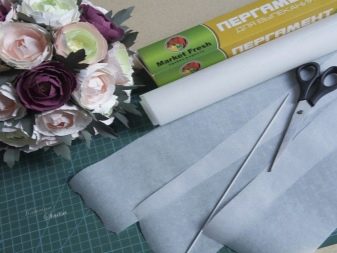
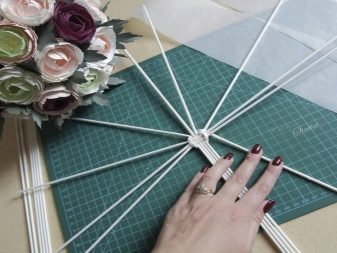
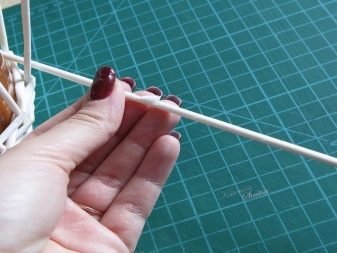
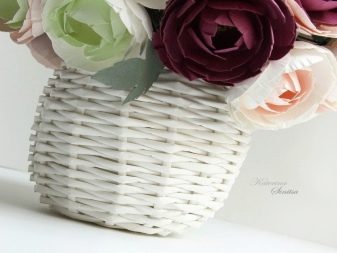
Beautiful examples
And some more reasons for inspiration. In this selection - the most beautiful products made of the simplest material. Instead of newspapers, you can take office sheets, parchment (baking paper), glossy magazine pages, etc.
- Beautiful basket for boho interior. It will be convenient to store combs and elastic bands here. For the design of a dressing table or mirror area in the house - the perfect solution. And in it you can put a few small towels, a flavor for the kitchen, and such a gift will delight mom or girlfriend for any occasion.

- Basket for books and abstracts. Such a storage system is very popular today, because everything is in sight, nothing will fall and do not disturb the order (as opposed to storing books / notebooks on a shelf).
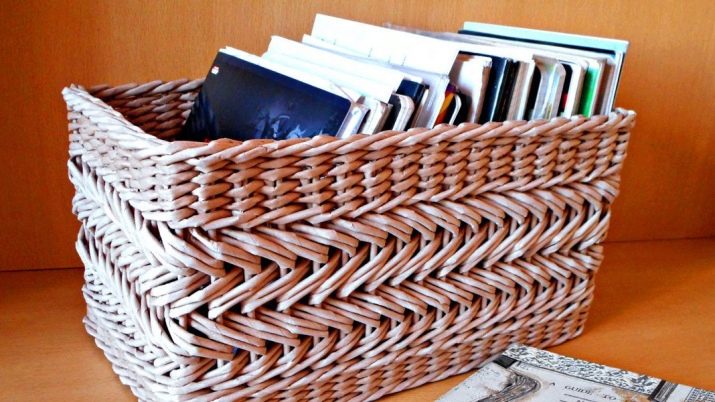
- Laundry basket, toys, cushions. The work is great, but the result is not comparable to a store acquisition.
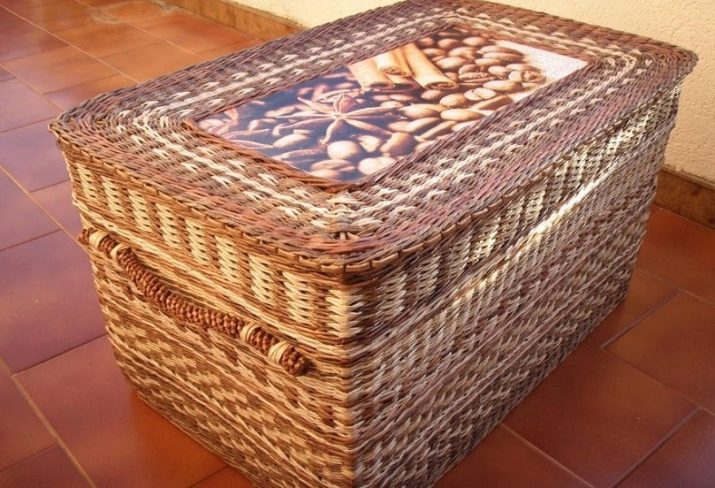
- Such a nice floor vase will decorate the corner of the living room. Inside you can put a transparent glass vase, and then it is quite possible to drop real flowers here.
And a glass vase inside can be a safe area for large candles.
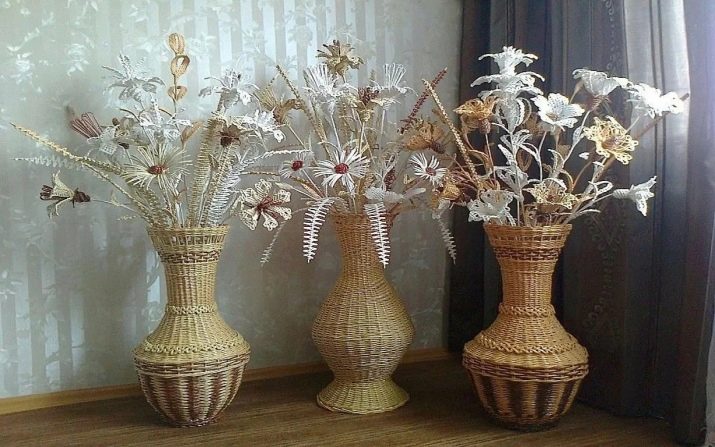
- A very beautiful braid - will decorate the kitchen, and the living room, and the hallway. Here you can put small vases, pencils and even a sugar bowl or a container with crispy straws inside. And such a braid will be a beautiful option for serving delicious grissini sticks on the table.
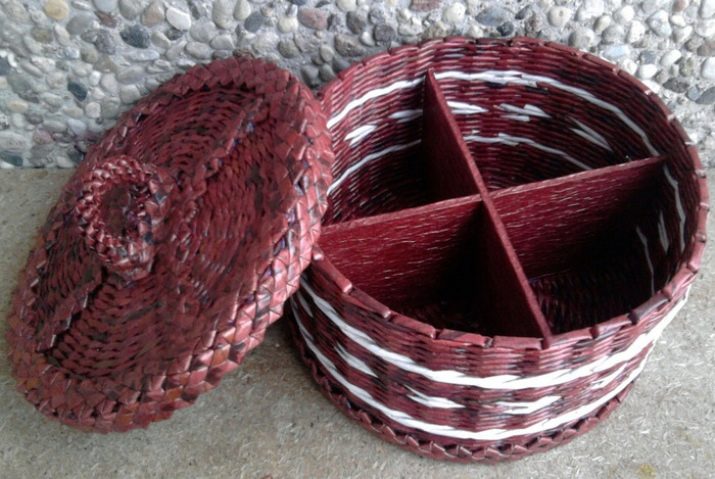
- Real girl skarbnitsa - here you can store children's dresses for new generations, as well as the first toys, soothers, metrics, photo albums.
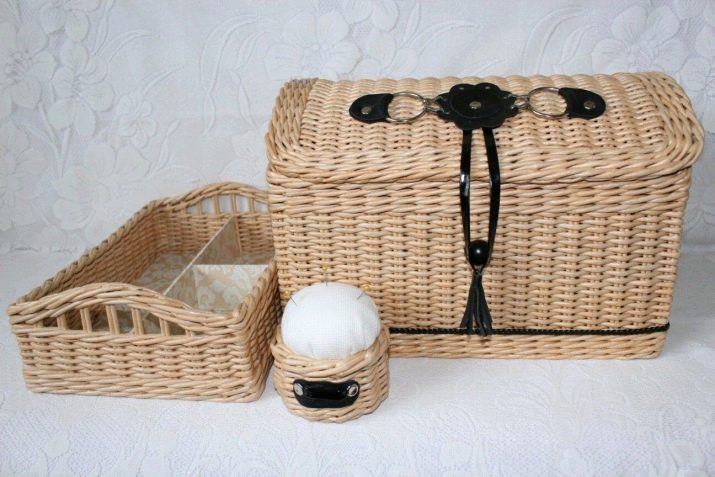
- Chic set from a needlewoman as a gift - It’s both utilitarian and incredibly cool in a cozy interior.
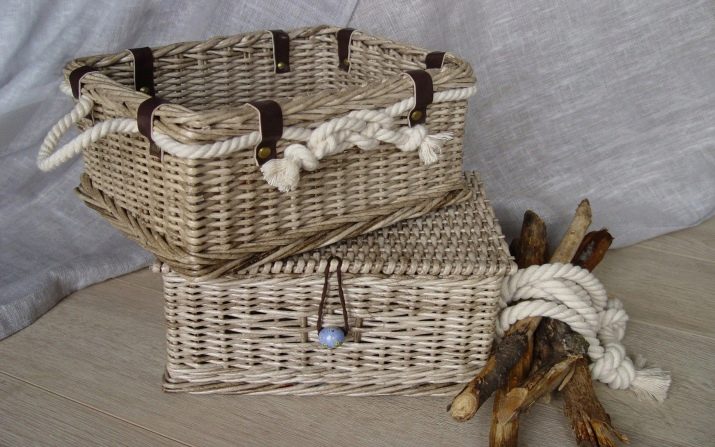
- A sweet find for any kitchen - suitable for storing spices, dried fruits, napkins, etc.

- Another chic vase, in this example - in ethnic style.
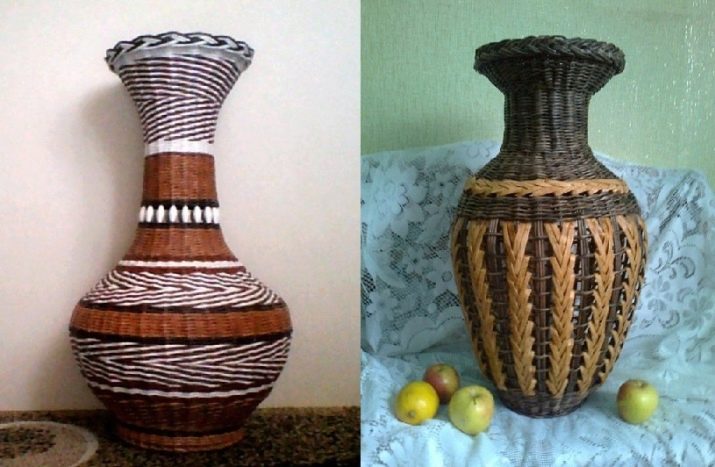
- Braided organizer - practical, cute, exclusive.
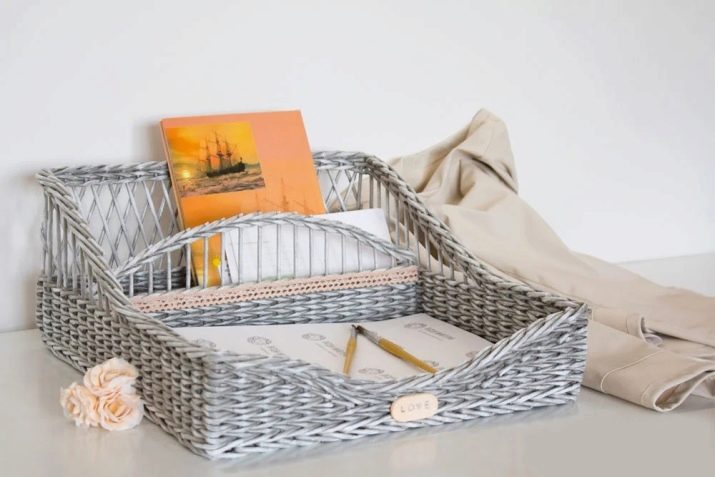
Ways of folding newspaper tubes in the next video.
